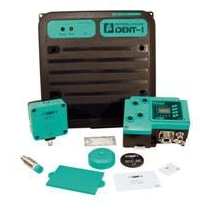Challenge
In most applications, radio-frequency-identification (RFID) systems are used to store product and process data on, or retrieve it from, a special RFID tag using wireless technologies. Power to operate the electronics in the tag comes from the RF energy of the interrogating transmitter. When powered, the tag transmits the programmed identifying information to the receiver. But if you look at RFID tagging on a more-fundamental level, it’s essentially a smart proximity sensor.
Application Solution
 A proximity sensor detects the presence of a piece of metal and knows that a pallet has arrived at that location. Likewise, an RFID system also detects the arrival of a pallet. Except an RFID system can also determine what type of part is on that pallet by reading the identification code programmed into the tag. This does not mean to suggest RFID beats proximity sensors for all possible applications, however, applications that use a collection of proximity sensors to read a code block — basically a piece of metal with a hole pattern — should seriously consider an RFID upgrade. Not only does RFID provide flexibility in the event a system must expand, it also gives more security and reliability.
A proximity sensor detects the presence of a piece of metal and knows that a pallet has arrived at that location. Likewise, an RFID system also detects the arrival of a pallet. Except an RFID system can also determine what type of part is on that pallet by reading the identification code programmed into the tag. This does not mean to suggest RFID beats proximity sensors for all possible applications, however, applications that use a collection of proximity sensors to read a code block — basically a piece of metal with a hole pattern — should seriously consider an RFID upgrade. Not only does RFID provide flexibility in the event a system must expand, it also gives more security and reliability.
Benefit
Error detection built into the RFID read operation reduces the chance of a read error. RFID also has a greater reading distance than the sensing range of a proximity sensor of comparable size. For example, an 18-mm extended range sensor has a nominal sensing distance of 12 mm, while an 18-mm RFID read/write head can read tags at 40 mm or greater. It’s easy to place the RFID read head safely out of the way of a moving pallet.
Tri-Phase Automation is a distributor of Pepperl + Fuchs in Wisconsin.
Contact Tri-Phase Sales or Get a Quote
